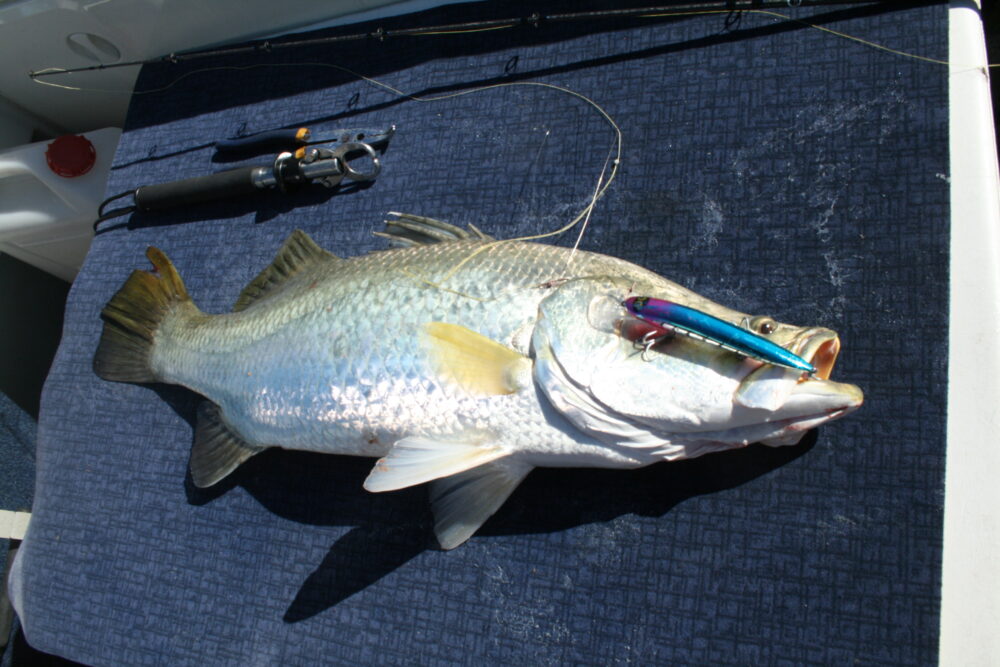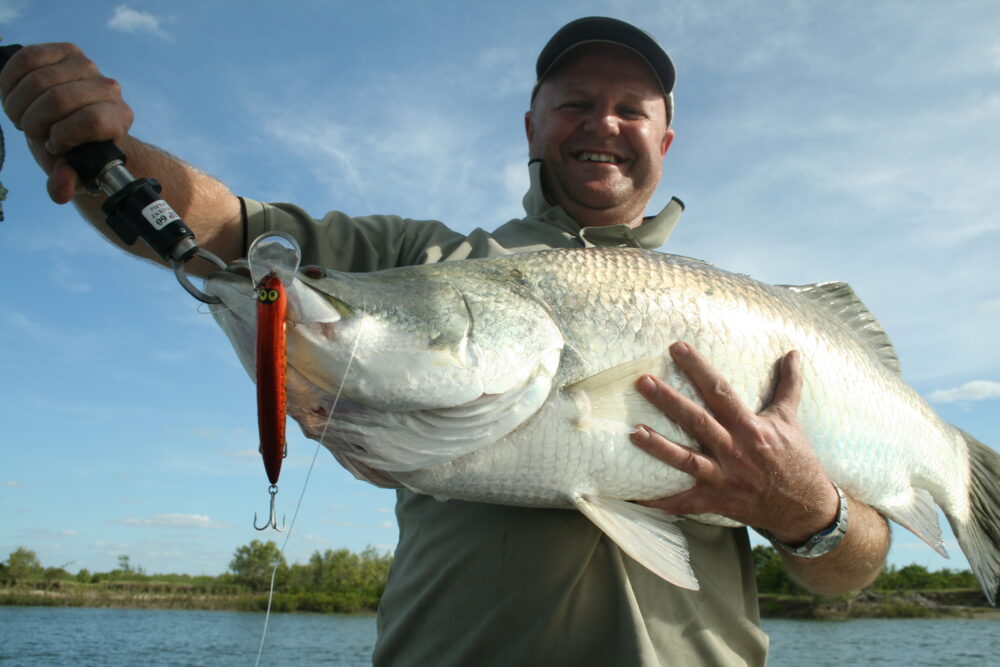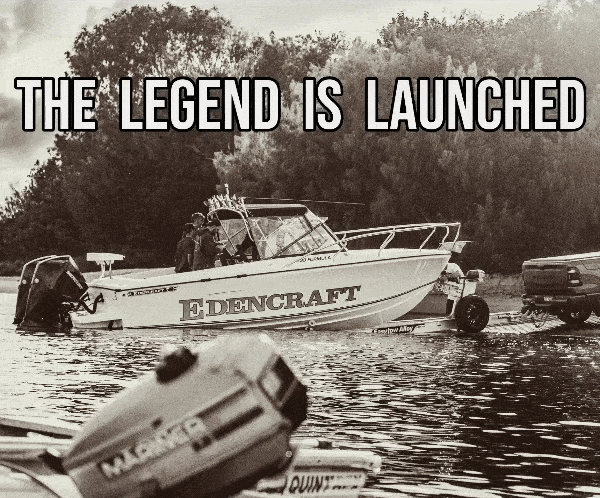Big Lures And Big Fish – By Dick Eussen
I am a firm believer that if you want to catch a big fish use a big lure, and while that may get me a few laughs I reckon my record of catching big fish on big lures stands up.
Yes, I have caught big fish on miniature lures, especially rubbers, but most of my big fish have been on 16+ cm lures, with some memorable catches on trolled 20 cm+ lures, like 24 cm Nils Master Invincible lures that I picked up in Finland in the 1980s – big barra loved them to bits.

This Staton River barra took a real liking to the Crazy Deep.
Big lures like these are not readily available as most end up in Africa where they are used to catch Nile Perch, and in Finland big lake trout.
Rapala has similar lures and most of us know that they work a treat on Spanish mackerel, queenfish and trevally, while big barra, threadfin salmon and cod can’t ignore a big X-Rap when it throbs past.
Most big lures are designed to troll deep, for instance the Halco RMG Crazy Deep lures dive down to 8m and beyond, more if you use wire,
and along with the Rapala X-Rap 20 and 30+ deep divers, they have been one of my main lures for big barra.
There are others that have also proven successful, along with some giant soft lures that can be trolled at these depths, something many anglers ignore in the belief that barra are a surface fish due to the way their eyes are set, but this is wrong as barra are caught in the Hinchinbrook Channel in 30m deep holes on live and dead bait.
After an article that I had published in a fishing magazine years ago, which advocated the use of big lures in the Coleman and Mitchell Rivers, some blokes abused me on the water on my next trip, including fishing great and fellow scribe, John Mondora, because they reckoned that the big lures did not swim properly.
They were correct, but if they had read my article correctly they would have read that the standard barra baitcaster was not the right tool for the job and that I used a Silstar 601-Series rod matched with a Shimano Calcutta 400 reel, loaded with 50 lbs Fins braid backed with an 80 lbs Asari mono leader to swim the lures.
I also wrote that strong tidal currents could prevent the lures from reaching their advertised depth and to swap over to a wire leader when such conditions were encountered.
This came about when I discovered that baitcasting rods don’t have enough muscle in the tip to swim big lures and when I did catch a big barra at 10m depth the baitcasting rod often lacked backbone to bring it to the surface thus I looked about for something with more power and settled on the Silstar rod.
Another plus for this is after you have landed a huge barra with a heavy outfit it’s in fairly good health and can be released quickly, but with a light outfit the chances are that you have a dead fish on your hands, something that has happened to me and my mates a few times before we wised up.
Swimming a lure all by itself and the speed of the boat is for lazy anglers, it’s best to jig and jerk the line to give the lure a stop, start, darting action that attracts the prey with deadly intent.
With a sturdy rod like the Silstar 601 and a strong line you can jig to your heart’s content and when a fish hits the lure you can set the hooks with positive power before leaning back and enjoying the fight and believe me, a metery barra at depth in strong currents will give you that and more, while ripping a snagged lure from an obstruction is easy.
But it’s not sporting I hear the light line aficionadas cry, but that is b/s, because its fishing with due respect of the health of barra and other large fishes, unless it’s a pure icebox filling exercise, because light gear fishing kills a lot of fish…
The correct troll speed is important, generally this means when the rod tip is vibrating rapidly; if not you need a little more speed to get the lure swimming properly.
Troll-jigging can be tiring on the arm, but the rewards are many, especially when the rod buckles down and the cry ‘fish-on’ sounds across the water.
Something else I need to mention is that that the vast majority of my big barra have been caught in the May-August periods, with some on the coldest periods that our mild-winter could produce, a time when we have huddled about a friendly campfire clothed in heavy winter gear as the winds swept salt laden dust across the tidal flats.
I have been guilty of it myself in years gone by in writing that barra don’t bite in winter, but these days I know better because the only time when you can get to the tidal rivers of most Gulf country is in winter when the cold winds blow.
I know better now, and while it’s not easy to catch barra and other fish by casting about snags and rocks during cool days, doing so on shallow tidal flats on an incoming tide can be rewarding as fish hunt mullet on the incoming tide.
You won’t need big lures for this, just the standard 6/10 cm size in either soft or hard bodies, but if one does not catch fish change over and try the other because fish are finicky creatures that not always play be our rules.
When fishing, think outside the circle and try different methods by changing outfits and trolling big lures in deep holes and pools that bounce from the bottom, if they don’t, change to wire for extra dept because when you stir the mud up the fish move in.
And don’t ignore the mudflat on an incoming tide…







